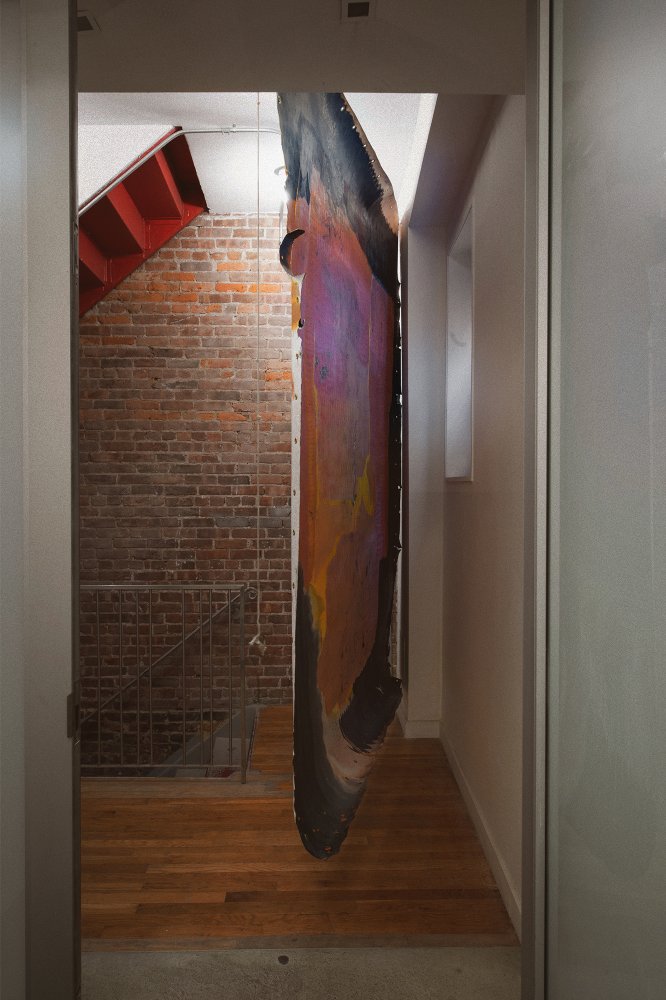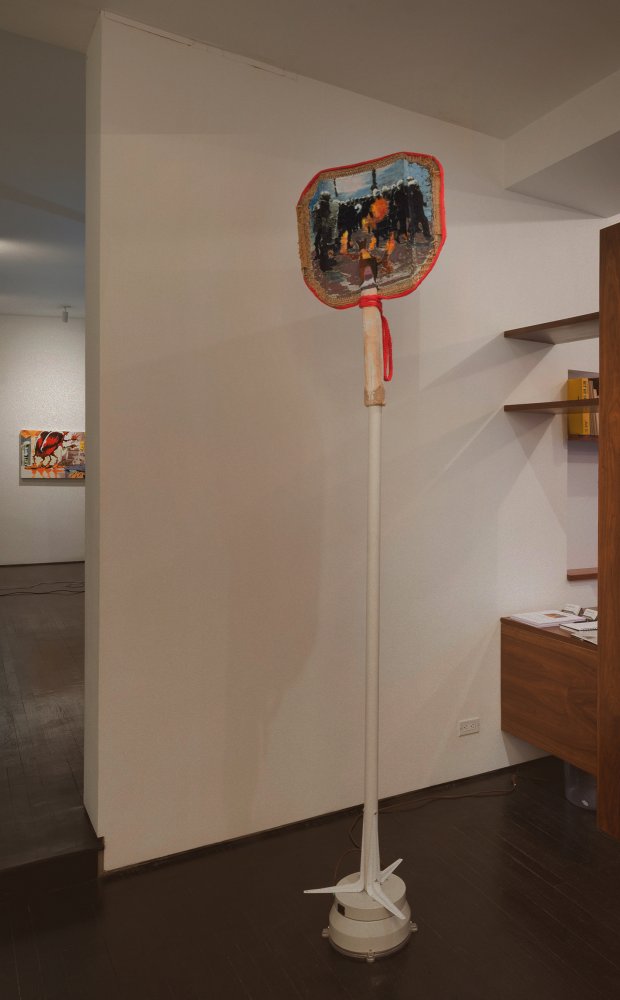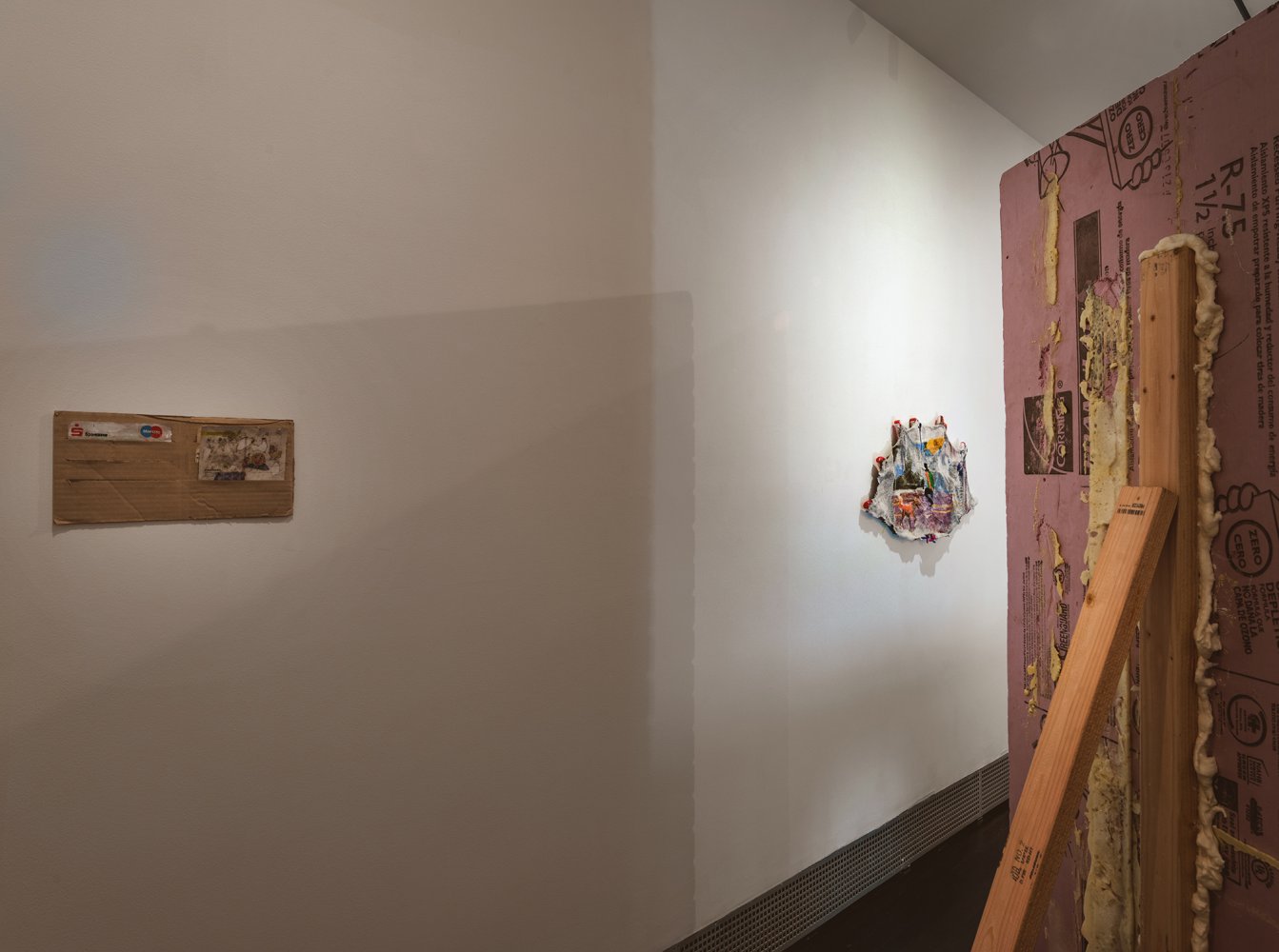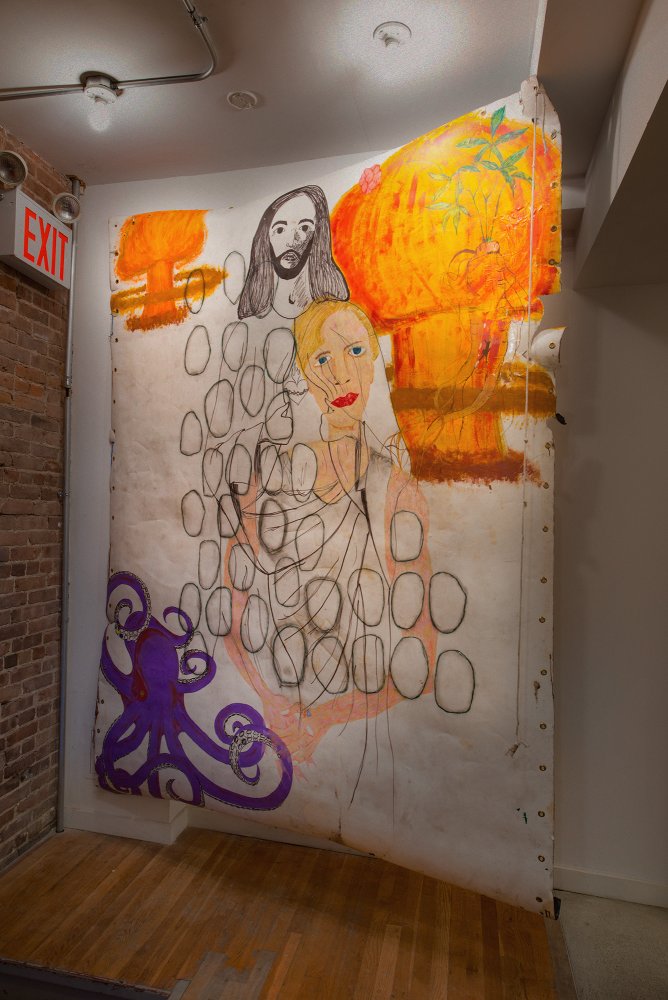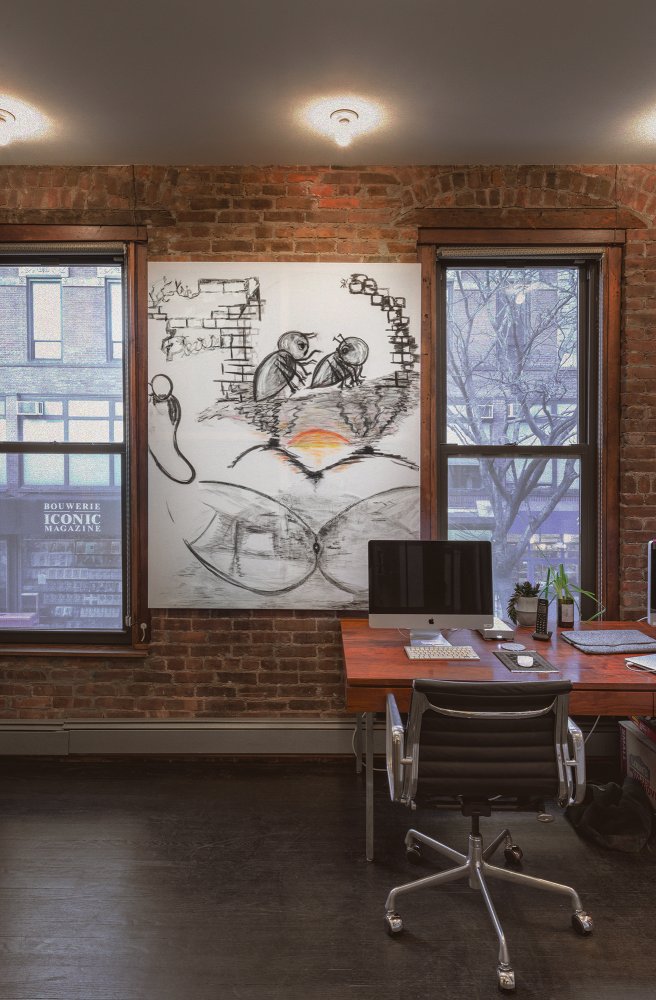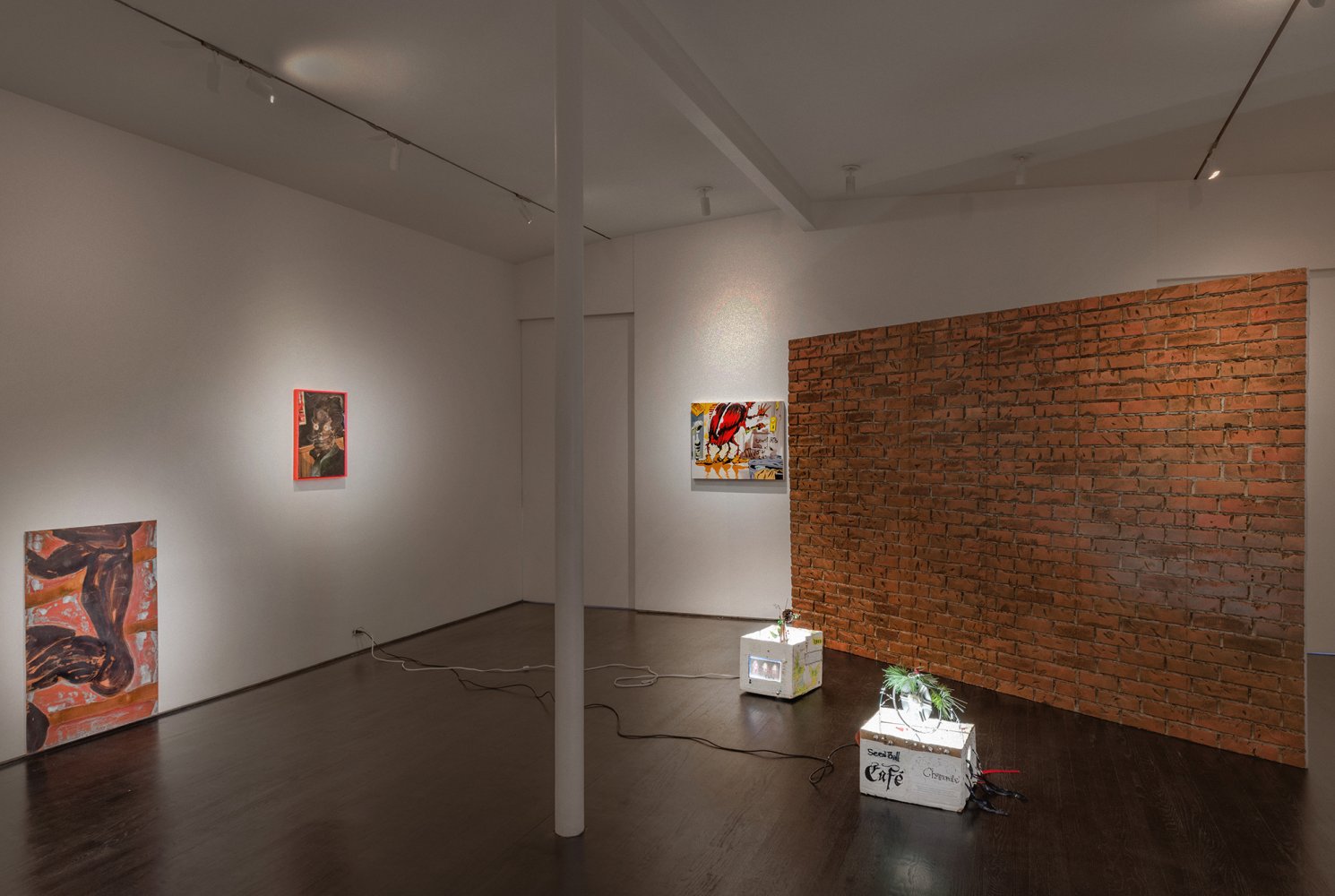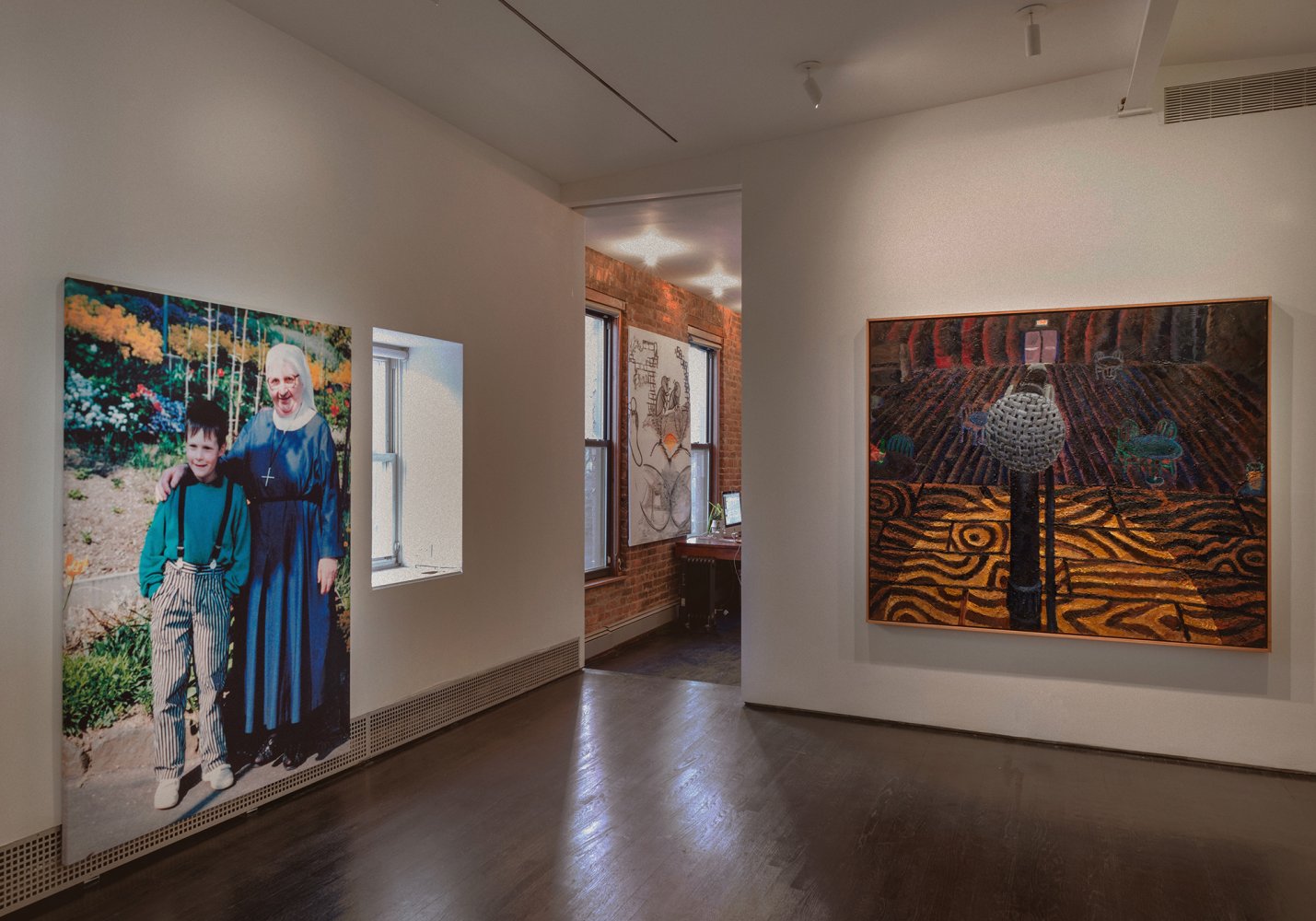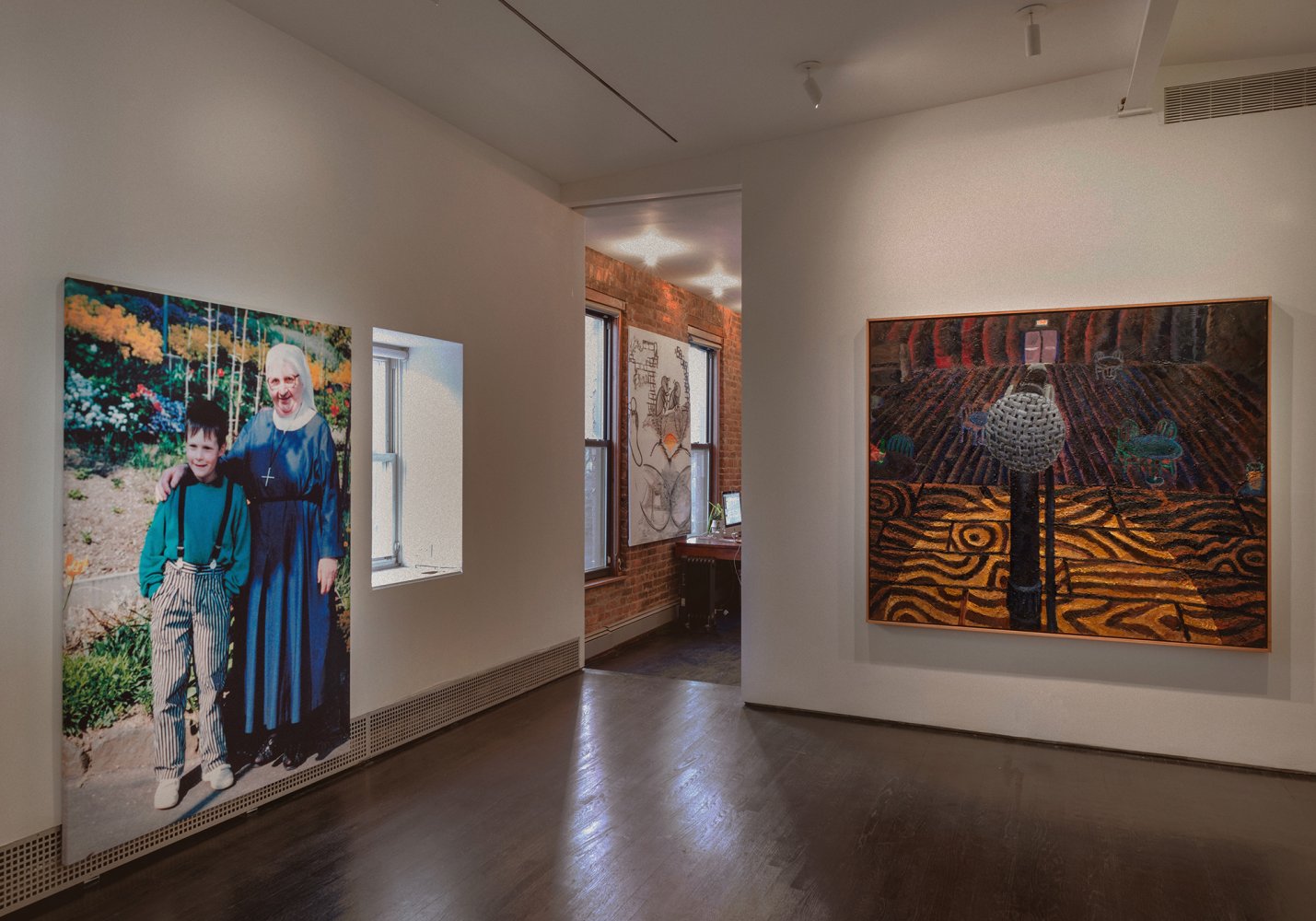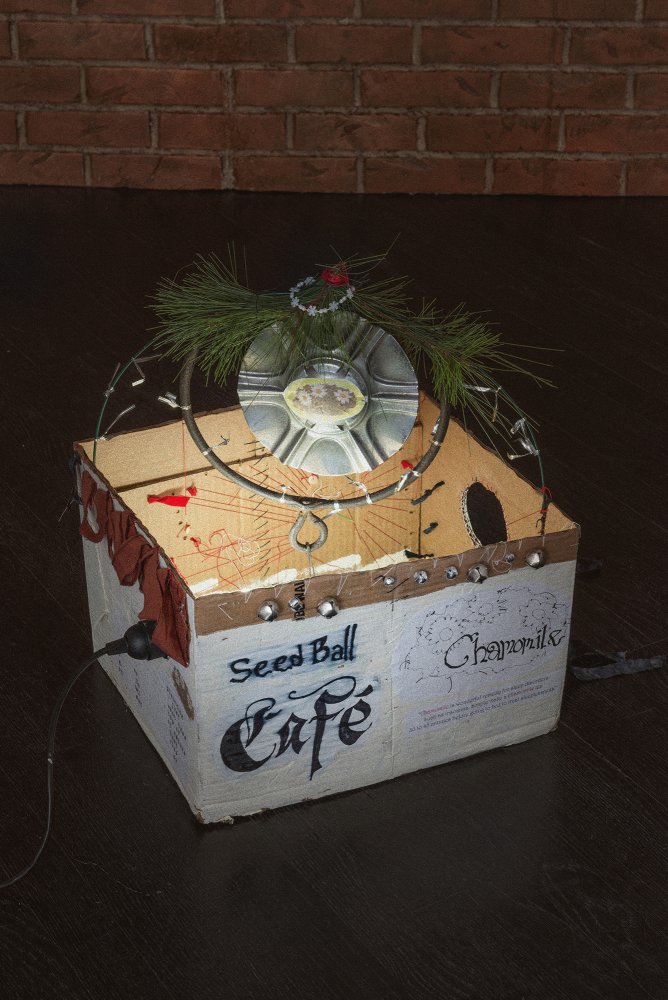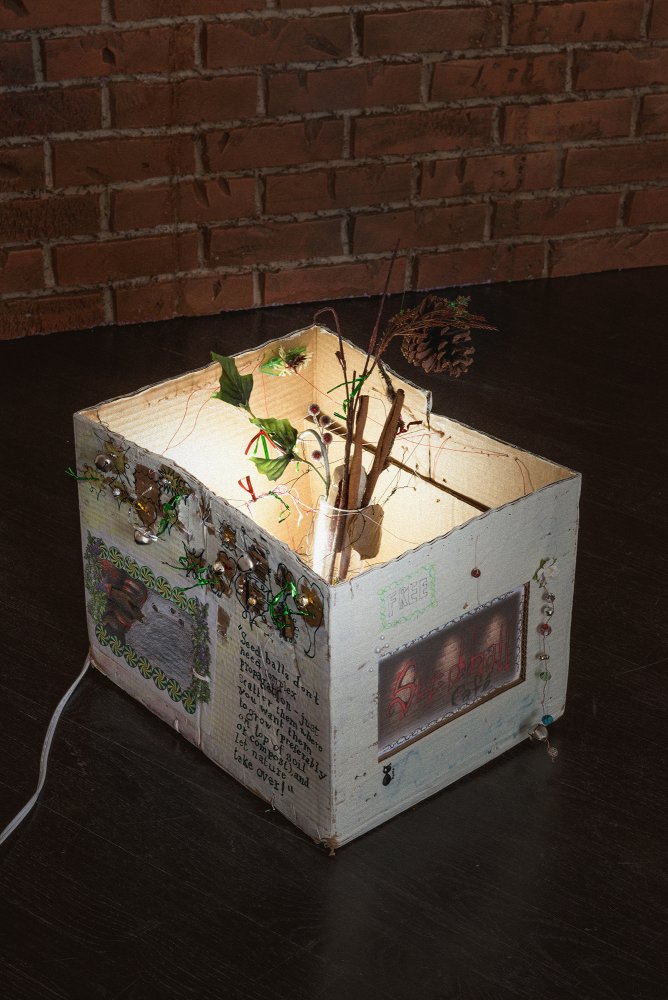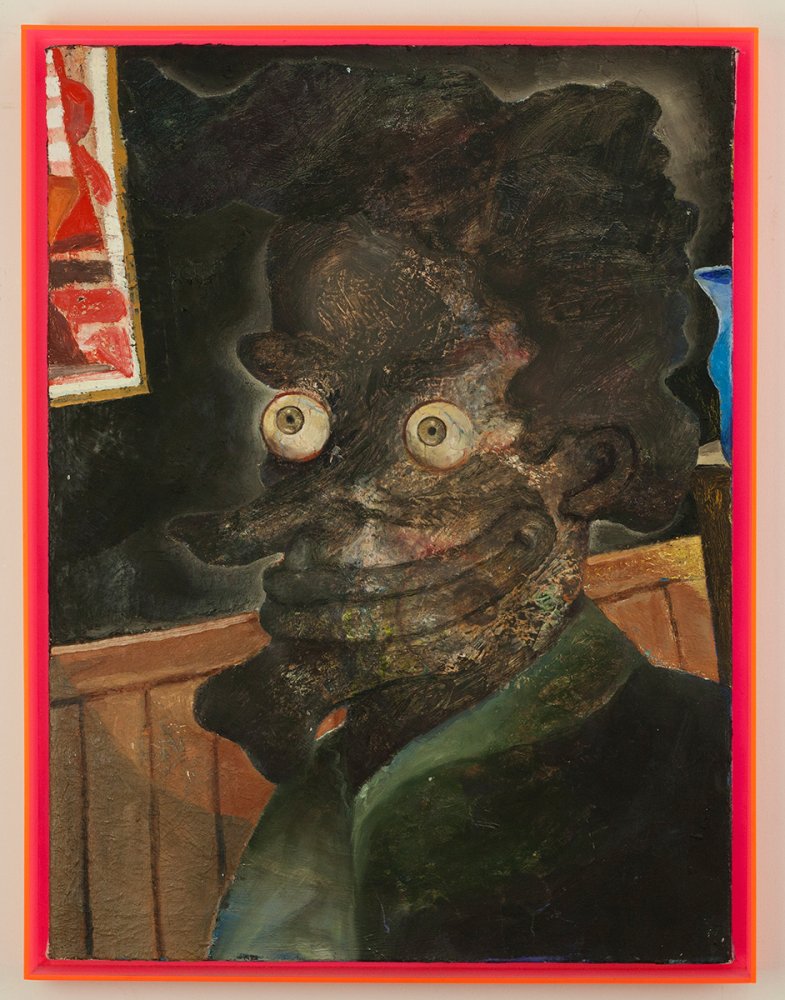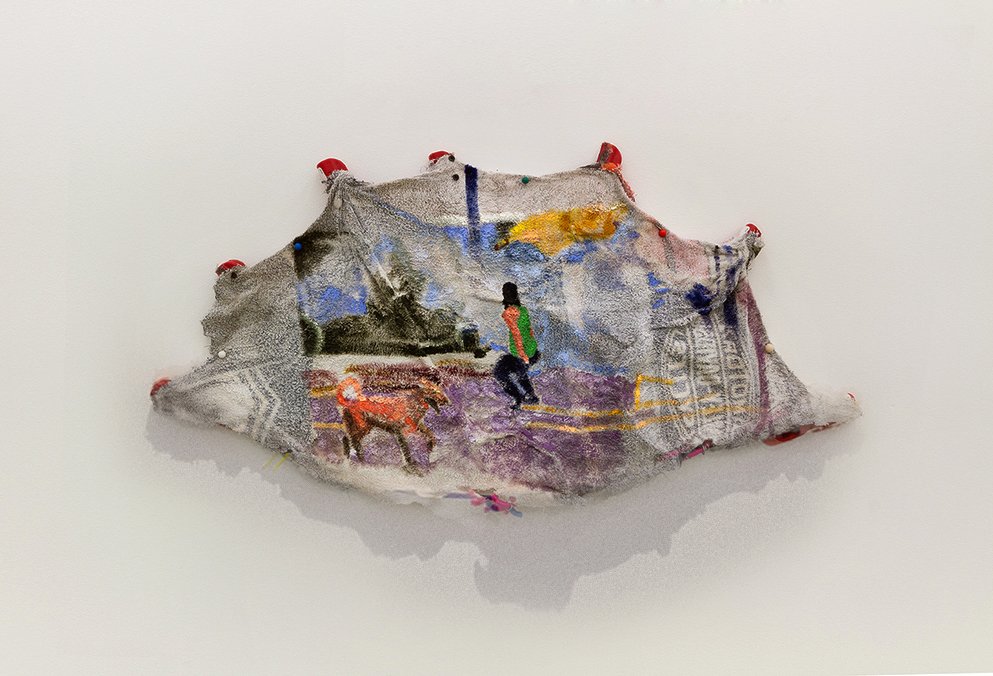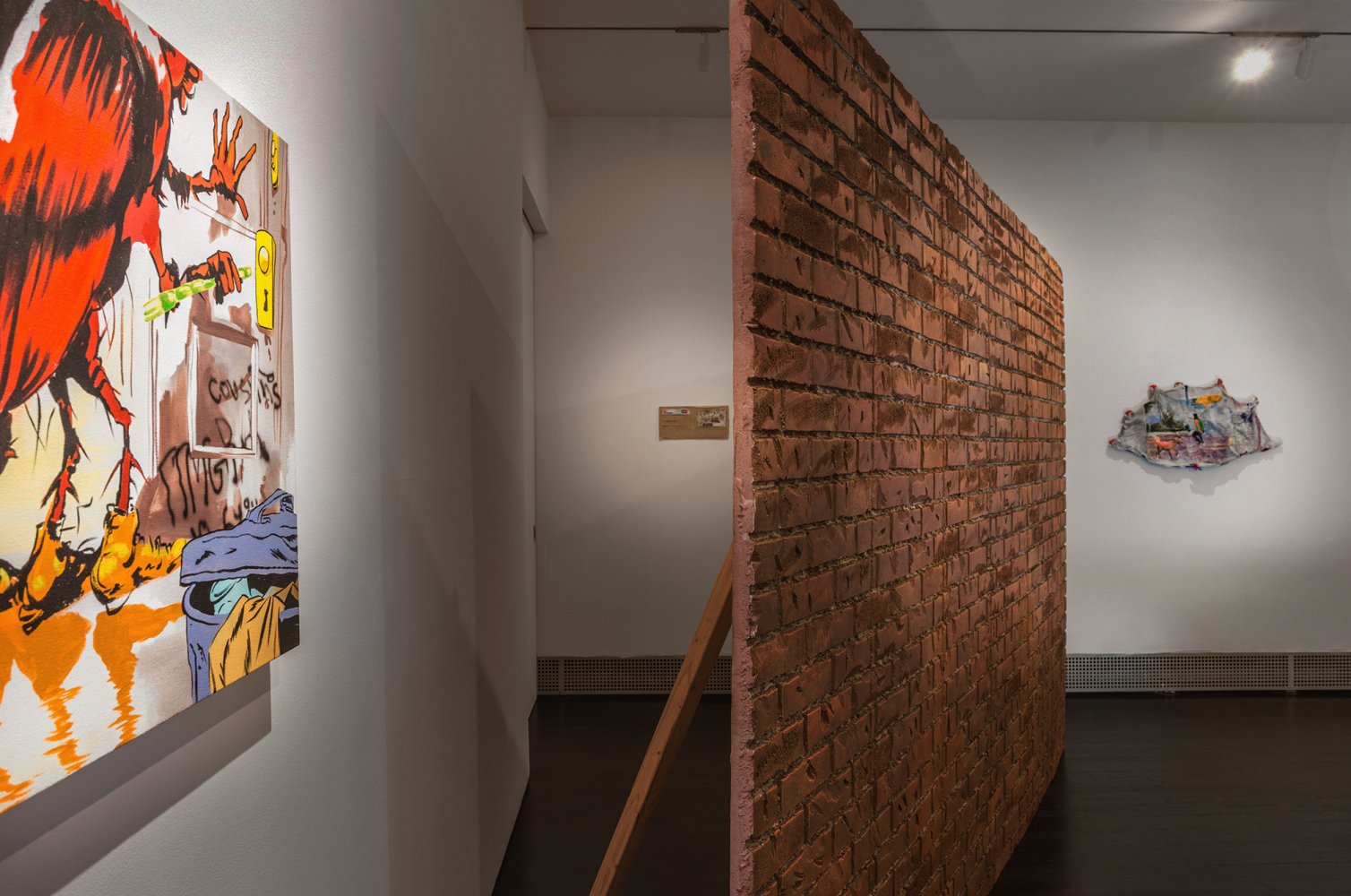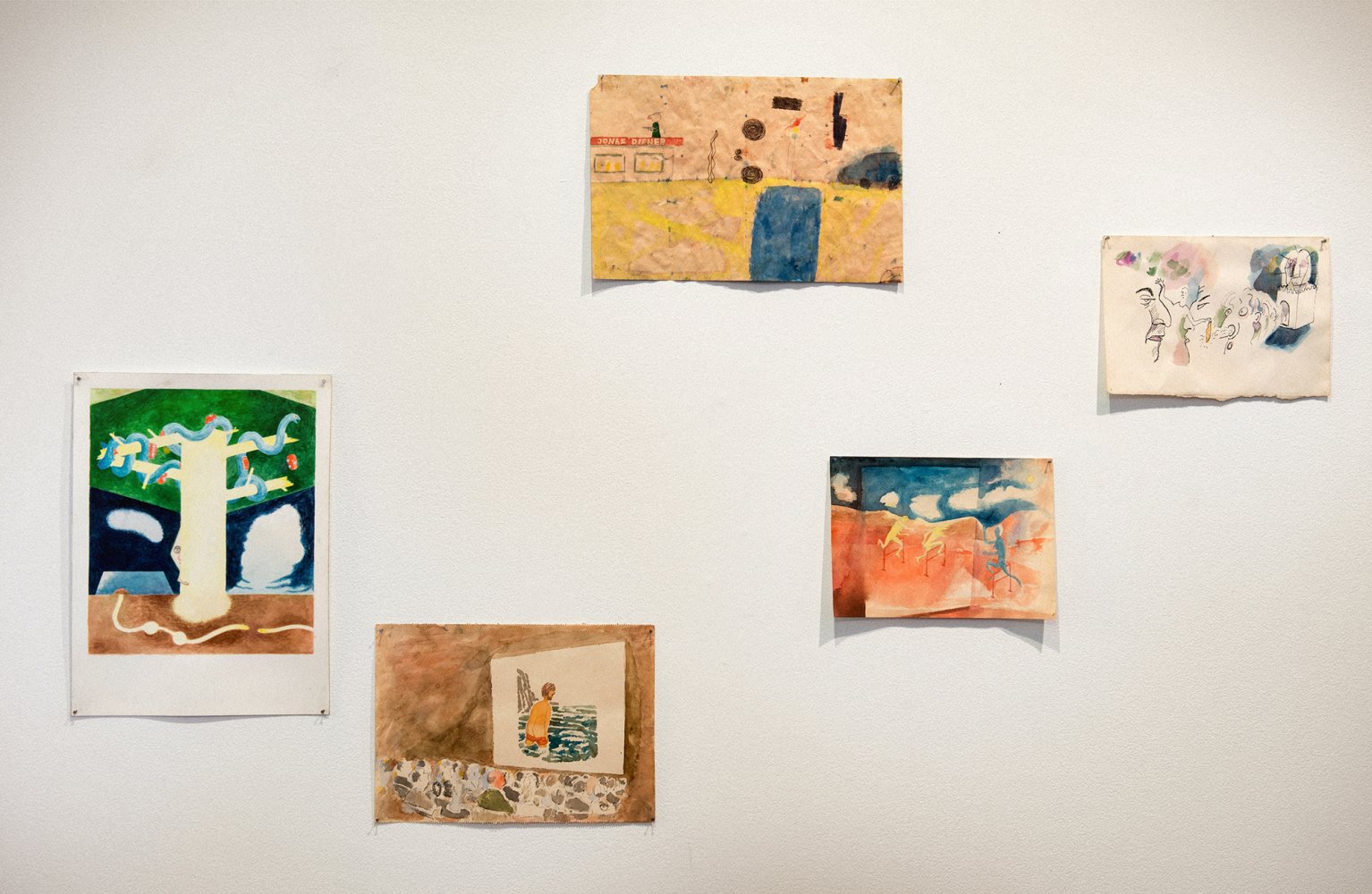“What a luxury annoyance is.”
—from Solitude by Lia Purpura
In the last exhibition in its intimate second-floor Rivington Street space before its multi-story/storefront expansion, On Stellar Rays presents a group exhibition curated by km temporaer’s Elisa R. Linn and Lennart Wolff. I came to the opening early and spent some time with each piece. I knew little else apart from the show’s title, I Pledge Allegiance, and the curious synopsis —“inspired by a 1982 Artforum article” —which led me there.
A majority of the work was characterized by a marked hastiness and nonchalance. There was an abundance of throw-away materials, cardboard, insulation foam. But this was no arte povera. Every piece was quicker, more affected and self-aware than the next. I kept thinking, ‘oh, that’s clever’ or ‘oh, that’s cute’ or ‘oh, that’s funny’. My consumption gained momentum, and then it hit me… the place was very cool. As I made the round, I found myself wondering to whom (or to what) the work was pledging its allegiance to.
I turned to the article said to have inspired the show, which is excerpted as an exhibition text and paired with a quote from Marlene Deitrich in Morocco that speaks of militaristic, but unmarked courage, and thus placing the whole show within that framework. Written by poet, artist and critic Rene Ricard, ‘The Pledge of Allegiance’ speaks in effusive, yet combative language of the East Village scene in the early 80s. The piece was one of several written around the same time by a group known as ‘The East Village Critics’, praising the ‘renewal’ of the Lower East Side at the time, and highlighting it as a brave new world for the avant-garde likened to Montmartre of the 1920s.
Yet as Rosalyn Deutsche and Cara Gendel Ryan noted in their 1984 article in OCTOBER journal, ‘The Fine Art of Gentrification‘, “the representation of the Lower East Side as an ‘adventurous avant-garde setting’, however, conceals a brutal reality”, where the art market was used in service of the strategic displacement of one of New York City’s poorest populations at the time.
At this point, we all know this story in some way shape or form, but at the time it was somewhat of a new concept that art and gentrification were linked. The Lower East Side has since gone through many iterations of ‘renewal’. It is, as Holland Cotter has put it, “a neighborhood that is, with continuing transformation, both a threat and a promise, is a morality tale in itself.” Its most recent bump towards total ‘yuppification‘, was spurred by the New Museum moving there in 2007. Cotter wrote less than a year later, “The museum exemplifies the developing boho-luxe mode of the Lower East Side. It makes a neighborhood that was once an alternative to establishment culture a welcoming home to that culture.” It was this institutionally-implemented change that helped generate On Stellar Rays, which was founded the year after the NM move in 2008. In light of these truths Ricard’s emphasis on the artist’s brave role in the embattled turf of culture now seems rather trite. For me, it speaks of a simpler time when artists could still be even imagined as courages or revolutionary when established institutions are the ones fomenting change in our current era.
How then, are we to relate to this text, and the work it is meant to frame? Gallery founder and director Candice Madey stated in a recent New York Times article about the show, “I thought it would be kind of a fun way to do one last show there that relates to the neighborhood.” While it relates, I am saddened to see how it relates. It persists within the optimistic mythology that artists, curators and galleries do not need to be bothered with the social and political implications of their presence within a place, so long as they are making “brave, new” contemporary work. But nothing at I Pledge Allegiance felt brave. It all just felt…cool. Scaled to sell, angled to charm, conceptually pruned. A series of lackadaisical, self-contained loops.
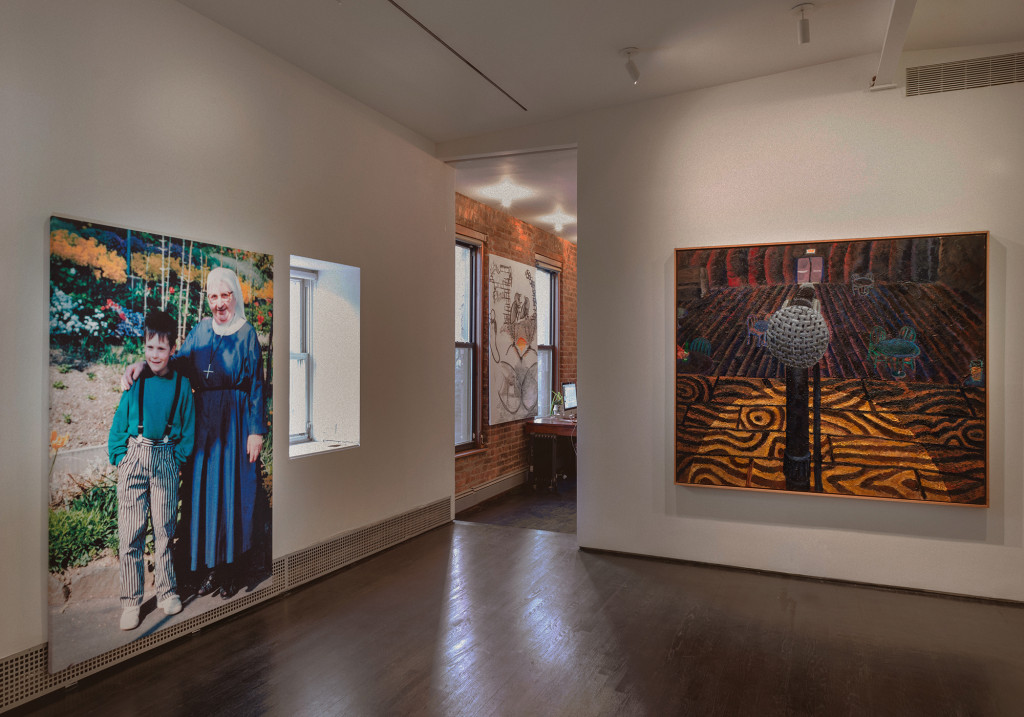
The excerpt of ‘The Pledge of Allegiance’/exhibition text opens with the sentence, “The conspiracy of excellence is a federation of eyes.” After seeing the show, I felt that in this case it might have been better written, “The conspiracy of excellence is a federation of I’s”, as each successive work was more removed and inward-facing than the next. There is some minor curatorial acknowledgment of this, whether intentionally or not. A sole amendment to the Ricard text exists in the form of the exhibition title, which exchanges ‘The Pledge of Allegiance’ (the original title of the essay) for ‘I Pledge Allegiance’, a consummate [con]textual shift to the auto-centrism that prevails in the age of the selfie.
Have we not come farther than the “cheerfully incontinent, incantatory assertion of self and selves” that Rosalind Krauss lamented over in her 1981 critique of Art Forum’s narcissistic new wave of writers (presumably including Ricard), who were “letting the art speak for itself”? This exhibition fails to convince me fully one way or another. But my inclination is to say it’s all just a bit of history repeating. Indeed, each work feels as though it exists on its own island, connected by proximity, their place in the federation (though I think ‘club’ is more well-suited) and vague political references. The connective tissue felt so casual, cursory that it refused to add up to much more than a backdrop of an idea of a scene.
Some works still managed to shine through. Subtle political tones emanated from the tongue-in-cheek materiality of Keegan Monaghan’s ‘Wall’ (2015), a faux brick barrier made of insulation foam, latex paint and wood. More successful in this context was Jamian Juliano-Villani’s painting ‘Four Feet are Better’ (2015), whose caricature of a cockroach picking a lock emanates a refreshing, light-hearted self-loathing, and awareness of the persistence and bizarre appeal of the undesired. Nolan Simon and Dylan Spaysky’s ‘Your anger is a gift’ is a rotating sign with the all caps word “NO” on one side, and a painting/photo of a protest on the other. A carved wooden arm attaches the sign (on a sort of basket-weave like material and shaped like a fan) to a slowly rotating white rod. Its playful, campy materiality combined with its use of a formally political device amounts to a more careful, politically conscious self-referentiality that is quietly amusing.

Another painting by Monaghan, entitled ‘The Exit’ (2015) is in many ways the centerpiece of the exhibition; an extra-large, ultra-close-up image of a spotlit microphone pointed in the direction of the viewer, facing an array of empty seats and tables. This perhaps interjects a note of empathy for the mute political indifference that pervades in Ricard’s article and throughout the show. If we were to take a stand and give voice to… something, who is even there to listen? It not only implicates the audience, but the audience’s audience.
Still, I can’t help but wish I’d have seen any or all of these under another premise —because the take-away within this framework is the inevitable truth that some selfies are better than others. Perhaps this is the whole point. I just feel like that particular point is rather stale.
So, you’ve got the gist. The show troubles me. It troubles me because we are living in a time not unlike the one in which Ricard was writing. Our neighborhoods, our city, our nation and our world demand more awareness than what this show has to offer. Which is not to say that every show need be political, nor every work of art deeply meaningful. But to posture the political in order to transude cool… just feels… wrong. Especially now. Especially then. Especially again. In their critique of Ricard and his contemporaries, Deutsche and Ryan contended (in 1984, fgs!) that, “Like Ronald Reagan’s campaign optimism, [Ricard’s and others’] enthusiasm knows no bounds, and, also like that optimism, ignores hard social realities and complex political questions: questions, in the first case, about what is being done to other people’s countries and, in the second case, to other people’s neighborhoods.” That same optimism in the age of Trump, Black Lives Matter, (still) rampant gentrification, starkly increasing wealth disparity, and the ever-inflating art bubble is irresponsible and uninformed at best, aloof and apathetic at worst.
Before long, the viewership rounded out the picture. The work quickly fell into place as the backdrop, a stage set of an art opening. Who then was the audience? Though tempted by free wine and people watching, I skirted out and walked out onto the street, where I passed some locals walking their dog. “What a luxury…”.**
Exhibition photos, top right.
